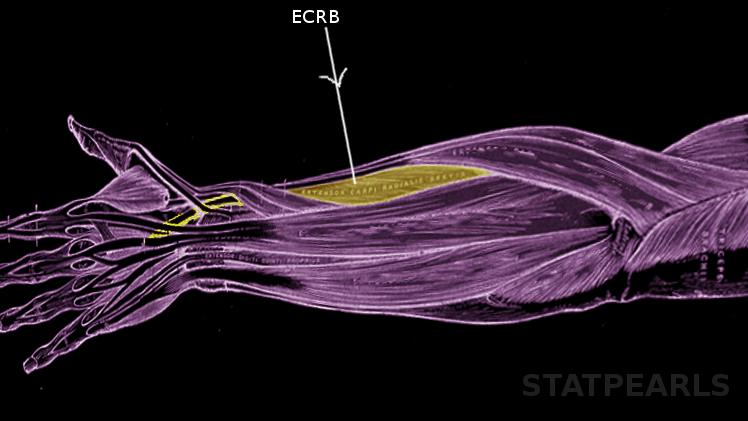[1]
Borges ÁVRM, Souza SAL. Anatomy of the nerves, vessels, and muscular compartments of the forearm, as revealed by high-resolution ultrasound. Part 1: overall structure and forearm compartments. Radiologia brasileira. 2021 Nov-Dec:54(6):388-397. doi: 10.1590/0100-3984.2021.0030. Epub
[PubMed PMID: 34866699]
[2]
Chaudhry F, Aminullah H, Sinkler MA, Arain A. Anatomy, Shoulder and Upper Limb, Forearm Compartments. StatPearls. 2023 Jan:():
[PubMed PMID: 30969606]
[3]
Breeland G, Alshuqayfi HA. Anatomy, Shoulder and Upper Limb, Profunda Brachii Artery. StatPearls. 2023 Jan:():
[PubMed PMID: 31194382]
[4]
Berezovsky DR, Bordoni B. Anatomy, Shoulder and Upper Limb, Forearm Arteries. StatPearls. 2023 Jan:():
[PubMed PMID: 31424739]
[6]
Yang K, Choi IJ, Lee JH. Accessory head of the extensor carpi radialis longus muscle merging with extensor carpi radialis brevis muscle. Surgical and radiologic anatomy : SRA. 2018 Sep:40(9):1001-1003. doi: 10.1007/s00276-018-2035-z. Epub 2018 Apr 30
[PubMed PMID: 29713736]
[7]
Gümüşalan Y, Kalaycioğlu A, Yazar F, Arifoğlu Y, Sinav A. Accessory extensor carpi radialis muscle and interconnecting muscular bundle. Acta anatomica. 1997:159(1):57-60
[PubMed PMID: 9522898]
[8]
Vaida MA, Gug C, Jianu AM, Damen NS, Muntean IL, Grigoriță L. Bilateral anatomical variations in the extensor compartment of forearm and hand. Surgical and radiologic anatomy : SRA. 2021 May:43(5):697-702. doi: 10.1007/s00276-020-02584-7. Epub 2020 Oct 1
[PubMed PMID: 33001251]
[9]
Gregory BP, Wysocki RW, Cohen MS. Controversies in Surgical Management of Recalcitrant Enthesopathy of the Extensor Carpi Radialis Brevis. The Journal of hand surgery. 2016 Aug:41(8):856-9. doi: 10.1016/j.jhsa.2016.06.010. Epub
[PubMed PMID: 27491631]
[10]
Tavassoli M, Jokar R, Zamani M, Khafri S, Esmaeilnejad-Ganji SM. Clinical efficacy of local injection therapies for lateral epicondylitis: A systematic review and network meta-analysis. Caspian journal of internal medicine. 2022 Spring:13(2):311-325. doi: 10.22088/cjim.13.2.1. Epub
[PubMed PMID: 35919654]
Level 1 (high-level) evidence
[11]
Stasinopoulos D. Letter to the Editor Regarding "Deep Friction Massage Versus Steroid Injection in the Treatment of Lateral Epicondylitis". Hand (New York, N.Y.). 2019 Nov:14(6):841-842. doi: 10.1177/1558944719827998. Epub 2019 Feb 8
[PubMed PMID: 30735069]
Level 3 (low-level) evidence
[12]
Nevalainen MT, Roedl JB, Morrison WB, Zoga AC. MRI of a painful carpal boss: variations at the extensor carpi radialis brevis insertion and imaging findings in regional traumatic and overuse injuries. Skeletal radiology. 2019 Jul:48(7):1079-1085. doi: 10.1007/s00256-018-3136-9. Epub 2019 Jan 12
[PubMed PMID: 30637474]
[13]
Karanasios S, Korakakis V, Moutzouri M, Drakonaki E, Koci K, Pantazopoulou V, Tsepis E, Gioftsos G. Diagnostic accuracy of examination tests for lateral elbow tendinopathy (LET) - A systematic review. Journal of hand therapy : official journal of the American Society of Hand Therapists. 2022 Oct-Dec:35(4):541-551. doi: 10.1016/j.jht.2021.02.002. Epub 2021 Feb 27
[PubMed PMID: 33814224]
Level 1 (high-level) evidence
[14]
Streib E. Upper arm radial nerve palsy after muscular effort: report of three cases. Neurology. 1992 Aug:42(8):1632-4
[PubMed PMID: 1641164]
Level 3 (low-level) evidence

